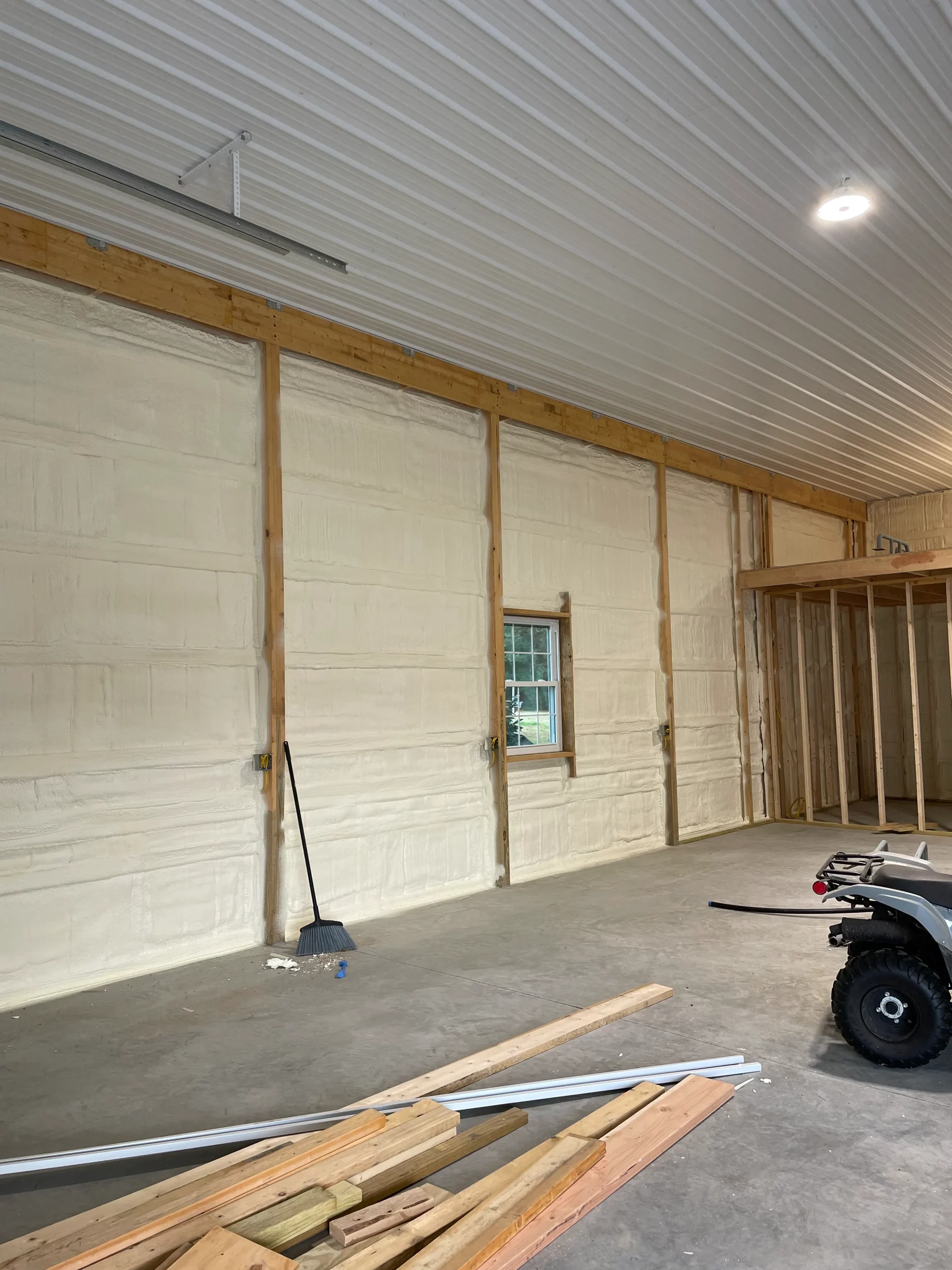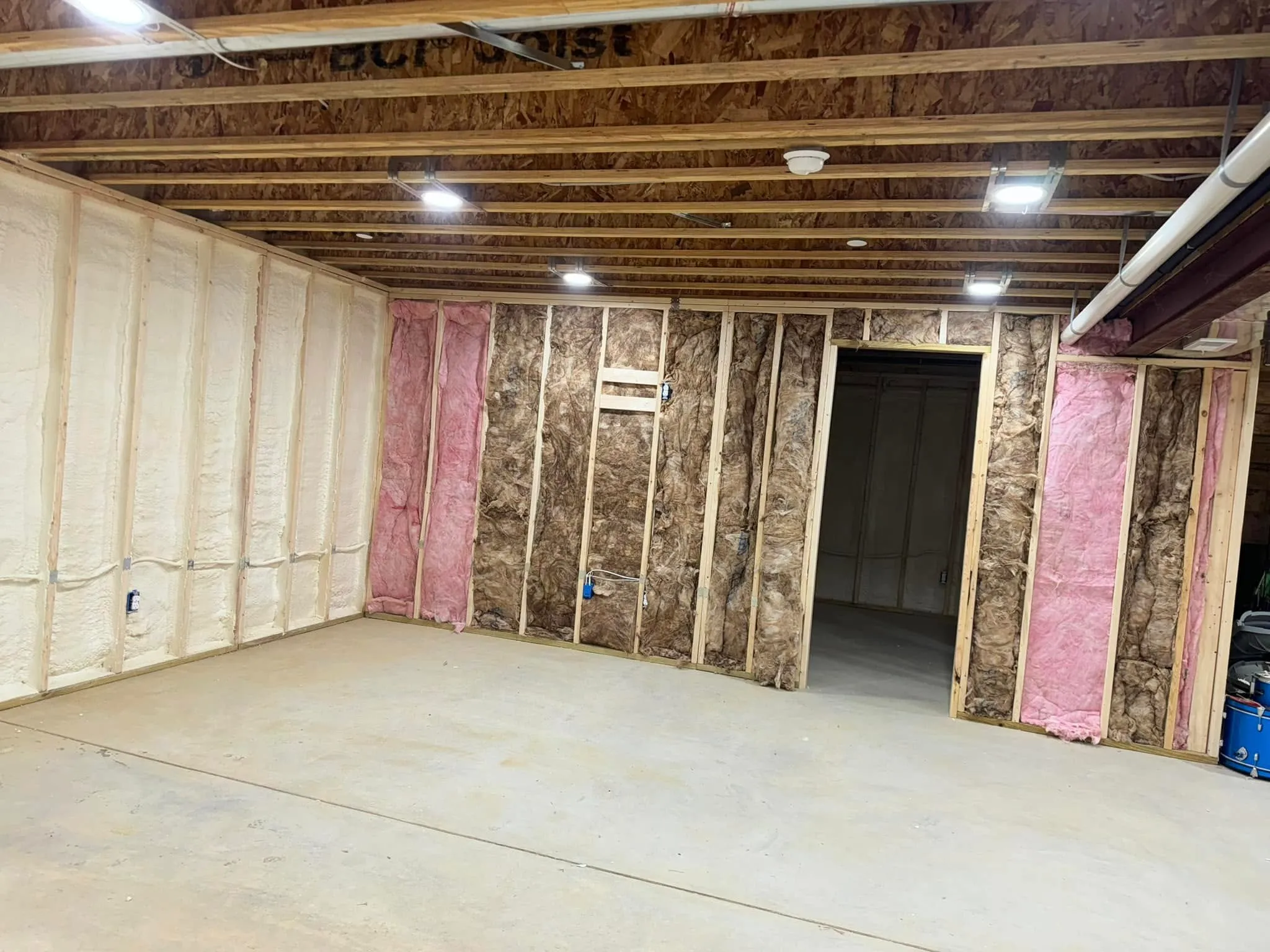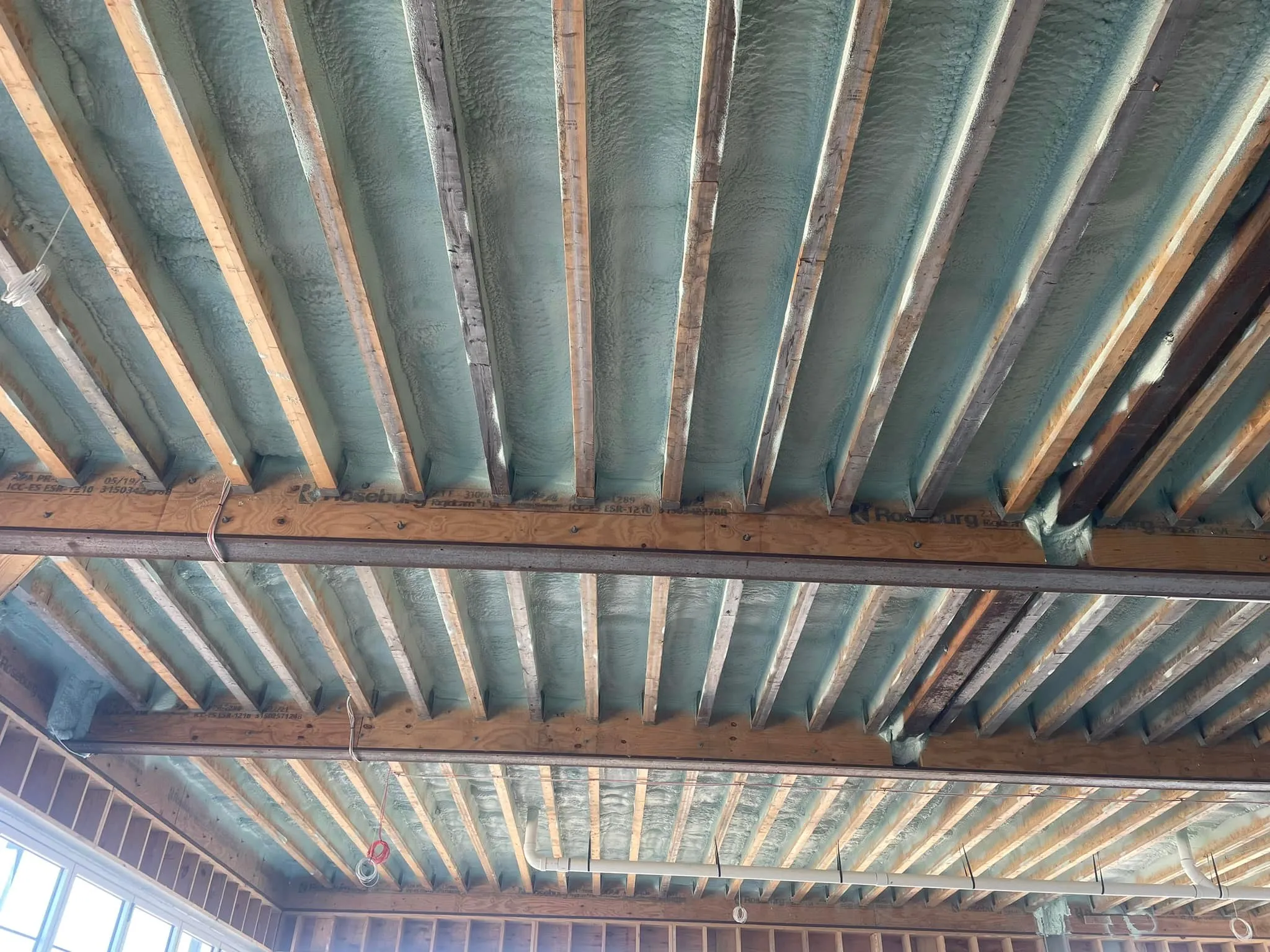

Spray foam insulation creates a stronger thermal barrier than fiberglass primarily because it functions as both an insulator and an air sealant. When installed, spray polyurethane foam expands to fill every crack, gap, and crevice, forming a continuous, airtight barrier. This monolithic seal stops convective heat loss, which is the transfer of heat through air movement. A significant portion of a home’s energy loss is due to air leakage, a problem fiberglass is not designed to solve.
Fiberglass insulation works by trapping pockets of air within its fibers to resist conductive heat flow, which is measured by its R-value. While effective in this regard, it does not stop air from moving through and around the batts. Even small gaps in fiberglass installation can seriously compromise its performance, allowing conditioned air to escape and outside air to enter. To see why this difference is so crucial, it’s important to understand the functional differences between these materials and compare their performance metrics. The information provided is based on extensive field experience in residential and commercial insulation applications.
To understand why spray foam is so effective, it’s helpful to know how heat moves. Heat flows in three ways: conduction, convection, and radiation. An effective thermal barrier must address all three.
While fiberglass has a good R-value to fight conduction, its weakness is convection. Air can easily pass around and even through fiberglass batts. A study from the U.S. Department of Energy notes that air leakage can account for a large portion of a home’s heating and cooling costs. Spray foam excels because it directly attacks this problem by creating a solid, impermeable air barrier that fiberglass simply cannot replicate.
Significant performance gaps arise from the fundamental differences in how these two materials are composed and installed. Spray foam insulation is applied as a liquid that expands into a solid to create a custom, seamless barrier, while fiberglass is a pre-manufactured product that must be cut and fitted into place.
Spray polyurethane foam (SPF) comes in two main varieties:
Bonus Tip: In a mixed-humid climate like Maryland’s, closed-cell spray foam is often used on roof decks and basement walls to prevent moisture issues, while open-cell might be considered for interior walls for sound control.
Fiberglass insulation’s performance depends entirely on a perfect installation, which is difficult to achieve in a real-world construction setting. The material must be meticulously cut to fit around pipes, electrical boxes, and wiring, and any compression or gap reduces its effectiveness.
This table offers a straightforward look at how the materials stack up against each other.
| Feature | Closed-Cell Spray Foam | Open-Cell Spray Foam | Fiberglass Batts |
|---|---|---|---|
| Typical R-Value (per inch) | R-6.0 to R-7.0 | R-3.5 to R-4.0 | R-3.1 to R-3.8 |
| Air Barrier | Yes, excellent | Yes, excellent | No |
| Vapor Barrier | Yes | No (vapor permeable) | No (requires separate barrier) |
| Moisture Resistance | High | Low | Low (can absorb water) |
| Installation Method | Sprayed liquid, expands | Sprayed liquid, expands | Cut and fit batts |
| Structural Rigidity | Adds strength | Does not add strength | Does not add strength |
Choosing the right insulation involves more than just comparing R-values. You should also evaluate your project’s specific needs, budget, and long-term goals, as factors like project type, climate, and cost will guide your decision.
Spray foam is most easily installed in new construction or during a major renovation when wall cavities are open. Retrofitting an existing home is possible with injection foam, but it’s a more specialized process. Fiberglass is often seen as an easier DIY option for accessible areas like attics, but professional installation is still recommended to minimize performance gaps.
Your geographic location matters. The International Energy Conservation Code (IECC) provides minimum R-value requirements based on climate zones. In colder climates, preventing air leakage and managing moisture is critical, making closed-cell spray foam a very effective choice. In warmer, more humid climates, an airtight building envelope is just as important for keeping conditioned, dry air in and hot, moist air out.
Bonus Tip: Before starting any insulation project, check your local building codes. Some jurisdictions have specific requirements for foam insulation, including the need for a thermal or ignition barrier like drywall.
There’s no getting around it: spray foam insulation has a higher upfront installation cost than fiberglass. However, it’s an investment that can pay for itself over time through lower energy bills. Because it creates a much tighter building envelope, it can reduce the size and cost of the HVAC system needed to heat and cool the home. When evaluating cost, consider the total long-term value, not just the initial price tag.
While fiberglass has been a standard insulation material for decades, spray foam offers superior performance by creating a more complete thermal and air barrier. Its ability to stop convective heat loss is what truly sets it apart, leading to better energy efficiency, improved indoor air quality, and greater comfort. The best choice for your property depends on your budget, climate, and specific building goals.
To determine the most effective insulation solution for your home or commercial building, it’s best to get a professional evaluation. Peninsula Insulation, LLC can help you understand your options and design a system that meets your performance and budget needs. Contact the team by phone at (410) 770-2624 or by email at wil@mdsprayfoam.net to discuss your project.
Here are answers to some common questions property owners have when comparing insulation materials.
The R-value of fiberglass can degrade if it settles, gets compressed, or absorbs moisture. The R-value of closed-cell spray foam remains stable over the life of the building. Some initial off-gassing can slightly lower the R-value in the first year or two, but it stabilizes at a high level.
This is a common question for attic retrofits. In many cases, it’s possible to spray foam directly over existing fiberglass, a process known as “flash and batt.” A thin layer of closed-cell spray foam is applied to the roof deck to create an air and vapor seal, and fiberglass is then used to fill the remaining cavity. This hybrid approach can be a cost-effective way to improve performance.
Closed-cell spray foam is water-resistant and is recognized by FEMA as a flood-resistant material. It can block water from passing through and will not absorb it. Open-cell foam, on the other hand, is not waterproof and will absorb water if exposed to it.
Spray foam insulation is a very durable material. When installed properly, it does not shrink, sag, or settle over time. It should last for the entire lifespan of the building.


